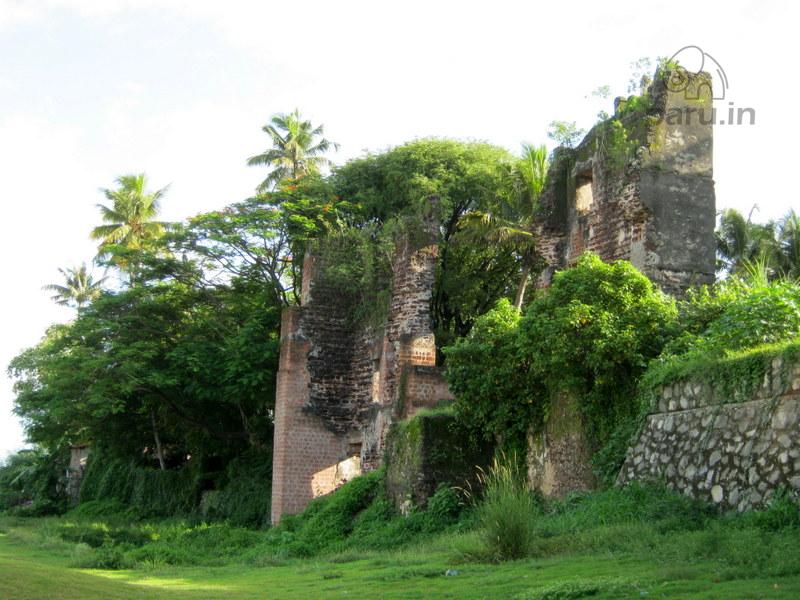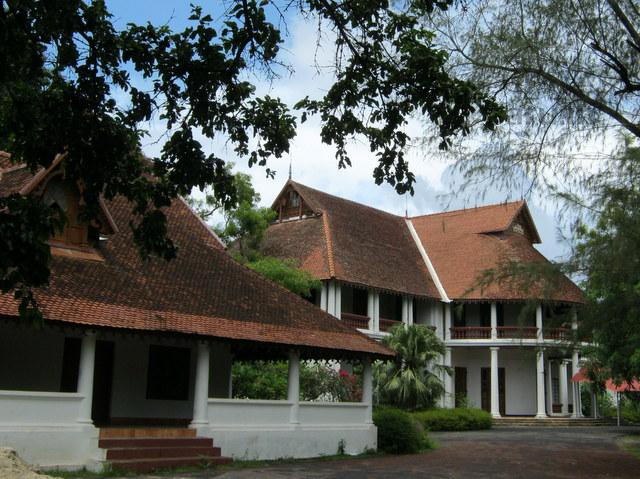History of Kollam
In the earlier days - 8 century AD - Kollam was called Desinganadu.
H
istory of Kollam is both old and significant. In the earlier days ( 8 century AD) , Kollam was called Desinganadu. In those days Kollam was the capital of a kingdom called Venad.Roughly Venad comprised of the present day Kollam, Thiruvananthapuram and the Kanyakumari District now in Tamil Nadu. Again Venad was one of the 18 kingdoms that formed the south Indian empire called Cheran Empire.
Many centuries ( read it as many battles ) later , Venad was expanded into a new kingdom called Travancore. Approximately Travencore comprised the south half of modern day Kerala from the borders of Cochin (kingdom) downwards, and also some areas that is now in the Tamilnadu state.
Then came the colonial era of India. Kollam was still ruled by the Travancore kings , but under the dominion of Madras Presidency , constituted by the British.
Post independence of India , in 1956 Kerala state was formed primary on linguistic basis. That is the Malabar ( north Kerala) , Cochin ( central Kerala) and the Travancore regions were merged into one state called Kerala.
Going back to the ancient history of Kollam again, the Chinese traders were one of the oldest foreign communities to settle in Kollam. That was during 8th century AD or even before.
That was during the period Kollam evolved as a major trade center ( of spices ) and an important port in the Malabar coast.
Nothing much of the Chinese legacy remain in Kollam , except the peculiar fishing nets that dotted around the Ashtamudi backwaters are called Chinese fishing nets ( Cheena Vala , in local language Malayalam). And of course the bowl like frying pan popular in Kerala is called Chinese pan ( Cheena Chatty in Malayalam ).
The heart of the Kollam town is called Chinnakada . It could be the corrupted form of China-Kada , means China Bazaar ( or Chinese market). That argument should be taken with a pinch of salt , as Chinnakkada also means small market (in Tamil). That stands complementary to the Valiakada adjacent to Chinnakada, which means big market in Malayalam.
Then came the Nestorian Christian merchants. They settled in Kollam. The history of Syrian Christianity of Kollam practically starts with their arrival. So is the Malayalam era calender, that is believed to be established by Nestorian Christian in 825 AD. The calender is called Kollavarsham , literally Year of Kollam. Kollavarsham continues to be the traditional calender of Kerala. Now, the word Kollam in Malayalam language is synonym to the word year.
The arrival of European traders in Kollam started with the Portuguese in 1502 AD , the Dutch in 1661 AD and finally the British. The European merchants were slightly different from the Chinese, Persian , Phoenician and the Roman merchants who already had long established trade base in Kollam many centuries before the arrival of European merchants.
Their trade interest gave way to power struggle. The rivalry between the local kings were exploited to the core to by the competing Europan traders to establish foothold.
A place called Thangasseri in the northern fringe of Kollam town still has the remains of the Dutch fort.
The British were more successful than the Portugese and the Dutch. The British influence on the local rulers lasted till the end of colonial era in 1947. Many of the historic sites in Kollam are popular tourist attractions in Kollam.
Velu Thampi, the then Dalava ( prime minister) of Travancore made famous proclamation in 1809 in urging people to fight the British. This proclamation had a profound effect in the series of revolts that ensued. The proclamation was made at a place called Kundara in Kollam.
In the heart of the town, just across the lake is a giant mansion build during the early years of colonialism. This was used as the bungalow of Colonel John Munro , who was appointed by the then British Raj as the Resident. This 1810 built mansion is pleasant hybrid of the Kerala English style architectures. Post Raj , it works the government's guest house. However it is still known as Residency Bungalow, its original intent.
Though it's international importance faded in the past centuries, Kollam still remained as an important local trade center. It has significant production of cashew ,coir , copra and tiles. Even today a tour to Kollam is never complete without a visit to the traditional tile factory and the coir making yards.
The trade unionism of Kollam is as old and widespread as its factories. In the modern day Kerala, communism is as live and kicking as it was ever in the history. Kollam is no different. It's modern day politics is noisy and vibrant.
The giant country barges once used to move its industrial and agricultural cargo is now converted into House boats for tourists in Ashtamudi backwaters!
Though the place is no more called Venad , an express train called Venad Express connects the erstwhile Venad with Malabar. In simple terms, Venad Express connects Trivandrum with Shornur. Of course this daily train passes via Kollam.
Talking of trains, if you are interested in seeing how railway stations looked some 100 years back, head towards Kollam railway station. Though a modern looking buildings has replaced much of the old railway station , some parts still retains its legacy, especially the east end of the station. This older part of the building is now mostly used by the railways parcel and mail services.
The two storied red brick 'chowk' , now located near the goods yard facing the town square still has that old era charm. You can see this building closely as the main flyover in the city pass between this building on one side and the landmark clock tower on the other side.
For very long time, the railway station was having both meter gauge and broad gauge lines - one diesel powered and the other with steam engines - as if the modern day Kollam was refusing to leave its legendary past.
So whatever you are seeing and experiencing in Kollam is not really disconnected from its eventful past.

Ruins of the Dutch fort at Kollam

Colonial Relics at Kollam. This erstwhile bunglow of the colonial era resident is now a state guest house located inside the Ashramam Picnic village
In the heart of Kollam town, just across the Astamudi lake is a giant mansion build during the early years of colonialism. This was used as the bungalow of Colonel John Munro , who was appointed by the then British Raj as the Resident. This 1810 built mansion is pleasant hybrid of the Kerala English style architectures. Post Raj , it works the government’s guest house. However it is still known as Residency Bungalow, its original intent.
